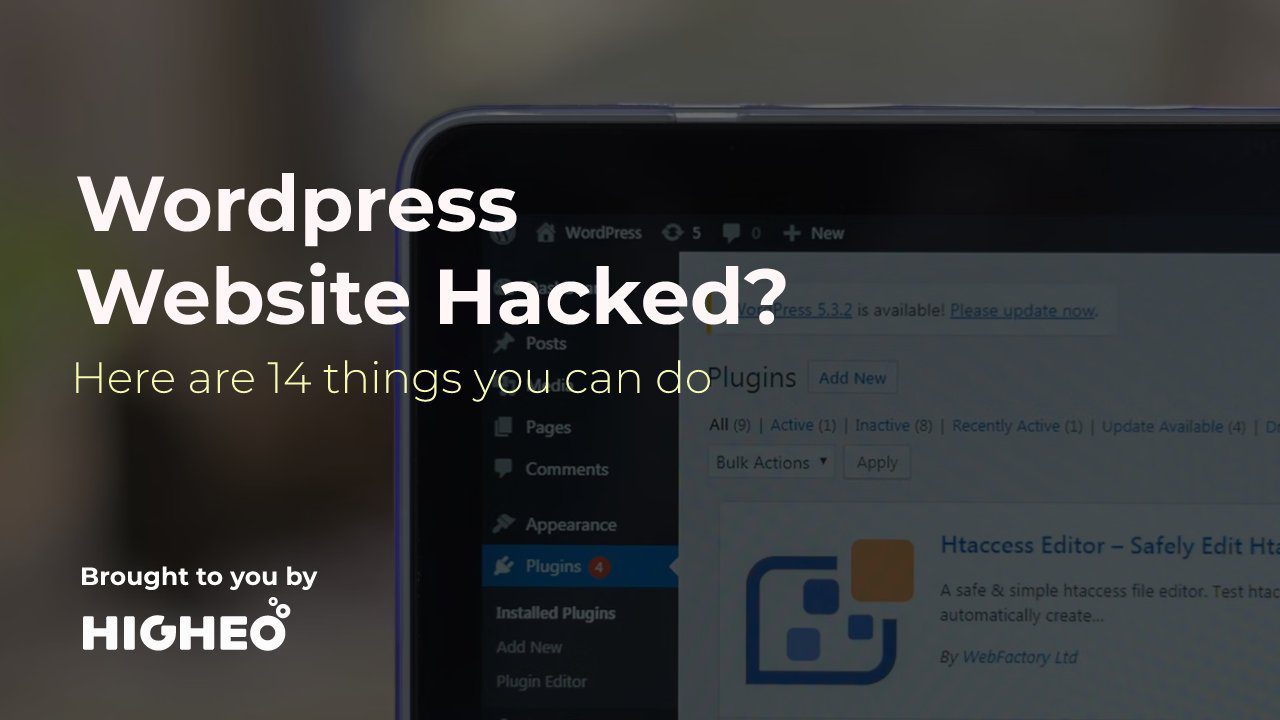When your WordPress website is hacked, it can be a frustrating and even scary experience. Here are 14 things you should do if your WordPress website is hacked.
If you’re not confident in your ability to secure your WordPress site, you can hire a WordPress malware removal company. These experienced professionals can help to secure your site and can also help to clean up and restore a hacked site.
1. Don’t Panic
The first thing you should do when your WordPress website is hacked is to take a deep breath and don’t panic. It can be tempting to immediately start trying to fix the problem, but it’s important to stay calm and think clearly.
2. Figure Out How the Hack Happened
Once you’ve taken a moment to calm down, the next step is to try to figure out how the hack happened. This can be tricky, but there are a few places you can look to get started.
First, check your website’s access logs. These logs should show you when and how someone accessed your site. If you see any suspicious activity, make a note of it.
You can also check your WordPress files for any recently added or modified files. If you see any files that you don’t recognize, it’s possible that they were added by the hacker.
3. Change All Your Passwords
Once you’ve determined how the hack happened, the next step is to change all your passwords. This includes your WordPress password, as well as any passwords for other services (like your web hosting account) that are associated with your website.
Be sure to use strong passwords that are difficult to guess. You can use a password manager to help you generate and keep track of strong passwords.
4. Update WordPress and All Plugins
One of the most common ways that WordPress websites are hacked is by exploiting outdated software. That’s why it’s important to keep WordPress and all plugins up-to-date.
If you’re not sure how to update WordPress, there are instructions available here.
5. Restore a Backup
If you have a recent backup of your WordPress website, you can restore it to undo any changes that the hacker may have made.
Be sure to delete any infected files before restoring your backup. You don’t want to inadvertently reintroduce the malware to your site.
6. Scan for Malware
If you don’t have a backup or you’re not sure if your backup is clean, you can scan your WordPress site for malware. There are a few plugins that can help with this, including Anti-Malware Security and Brute-Force Protection.
7. Change Your Security Keys and Salts
WordPress uses security keys and salts to help secure your website. If these keys are compromised, it can make it easier for a hacker to gain access to your site.
To change your security keys and salts, you can use a plugin like WP Security Keys.
8. Disable WordPress File Editing
By default, WordPress allows you to edit your theme and plugin files directly from the WordPress admin dashboard. This can be convenient, but it also poses a security risk.
If a hacker gains access to your WordPress admin account, they can use the built-in file editor to make changes to your site. To prevent this, you can disable the file editor.
9. Improve Your Password Security
In addition to changing your passwords, you can also take steps to improve your password security. One way to do this is to enable two-factor authentication.
With two-factor authentication, you’ll need to enter a code from your phone in addition to your password when logging into your WordPress site. This makes it much harder for a hacker to gain access to your site, even if they have your password.
10. Keep Your WordPress Site Updated
As we mentioned earlier, one of the best ways to keep your WordPress site secure is to keep it up-to-date. In addition to updating WordPress itself, you should also update your themes and plugins.
If you’re not sure how to update your WordPress site, check out our guide.
11. Use a Security Plugin
There are a number of security plugins available for WordPress, which can help to secure your site. Some popular options include Wordfence and Sucuri.
12. Restrict Access to Your WordPress Admin Area
Another way to improve your WordPress security is to restrict access to your WordPress admin area. By default, anyone can visit your WordPress login page and attempt to log in.
If you enable access restrictions, you can specify which IP addresses are allowed to access your login page. This can help to prevent brute force attacks, where hackers try to guess your password by trying multiple different combinations.
13. Implement SSL/TLS
SSL (Secure Sockets Layer) and TLS (Transport Layer Security) are protocols that encrypt communication between a web server and a web browser. This helps to prevent eavesdropping and tampering.
If you implement SSL/TLS on your WordPress site, it will help to protect your site and your users’ data.
14. Use a Web Application Firewall
A web application firewall (WAF) is a piece of software that filters and blocks incoming traffic to a website. This can help to prevent hackers from accessing your site.
There are a number of WAF plugins available for WordPress, including Sucuri and CloudFlare.
While you can do a lot of these yourselves, if you’re serious about your business, you should seek out a WordPress Management Company – these are WordPress professionals that will take care of everything for you. From rescuing your website to ensuring this does not get repeated. They take backups, they keep your website updated and will even go the extra mile to apply small edits and updates to your website.
News & Press Release Distribution Partners – SeoXnewswire
If you think your WordPress site has been hacked, don’t hesitate to take action. By following the steps above, you can ensure the security of your site and minimize the damage caused by a hacker.
Best Press Release Distribution Services India: A Guide For Indian Businesses – TechBullion



































